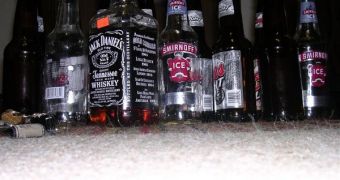A new statistical study has determined that young people are exposed to abnormally high numbers of ads advertising alcoholic beverages that are mostly consumed by people in this age group. The team behind the investigation has also determined that the magazines that mostly feature this type of ads also do not exhibit commercials for types of alcohol that are usually consumed by adults, which has led some to believe that this is an organized practice from the industry, aimed at bringing more young people in as consumers of its products, ScienceDaily reports.
The team has also uncovered that the highest concentration of targeted ads can be found precisely in the magazines that young people read the most. This state of affairs has led to a disproportionate exposure to dedicated drinks, the study also shows. “Alcohol companies are deceiving us. Contrary to their public statements, they are targeting youths through their advertising. They are saying one thing, but doing another,” Boston University School of Public Health Professor of Community Health Sciences Dr. Michael Siege says. He is also a coauthor of the new study, published in the December issue of the Journal of Adolescent Health.
The scientists would also like to remind the public that three of the largest alcohol-related associations in the United States – the Wine Institute, the Beer Institute, and the Distilled Spirits Council of the United States – say that they do not advertise to underage children. Scientists at the Johns Hopkins Bloomberg School of Public Health, and Virtual Media Resources were also involved with conducting the research. They analyzed ads from more than 118 magazines, published between 2002 and 2006, and found that premium beer, low-calorie beer, rum, vodka, and flavored alcohol beverages (the most popular with teens) were extremely well represented in the pages.
Alcohol such as gin, brandy, whiskey, and scotch, which is regularly consumed by adults, was up to four times less well represented in the same magazines, the study shows. “The percentage of a magazine's youth readers was an important predictor of which alcoholic beverages were advertised in a magazine,” the authors write in the journal entry. “The question of whether this advertising is disproportionately reaching and influencing underage youths (under 21 years old) lies at the heart of the public health debate about interventions to reduce youth drinking,” they conclude.

 14 DAY TRIAL //
14 DAY TRIAL //